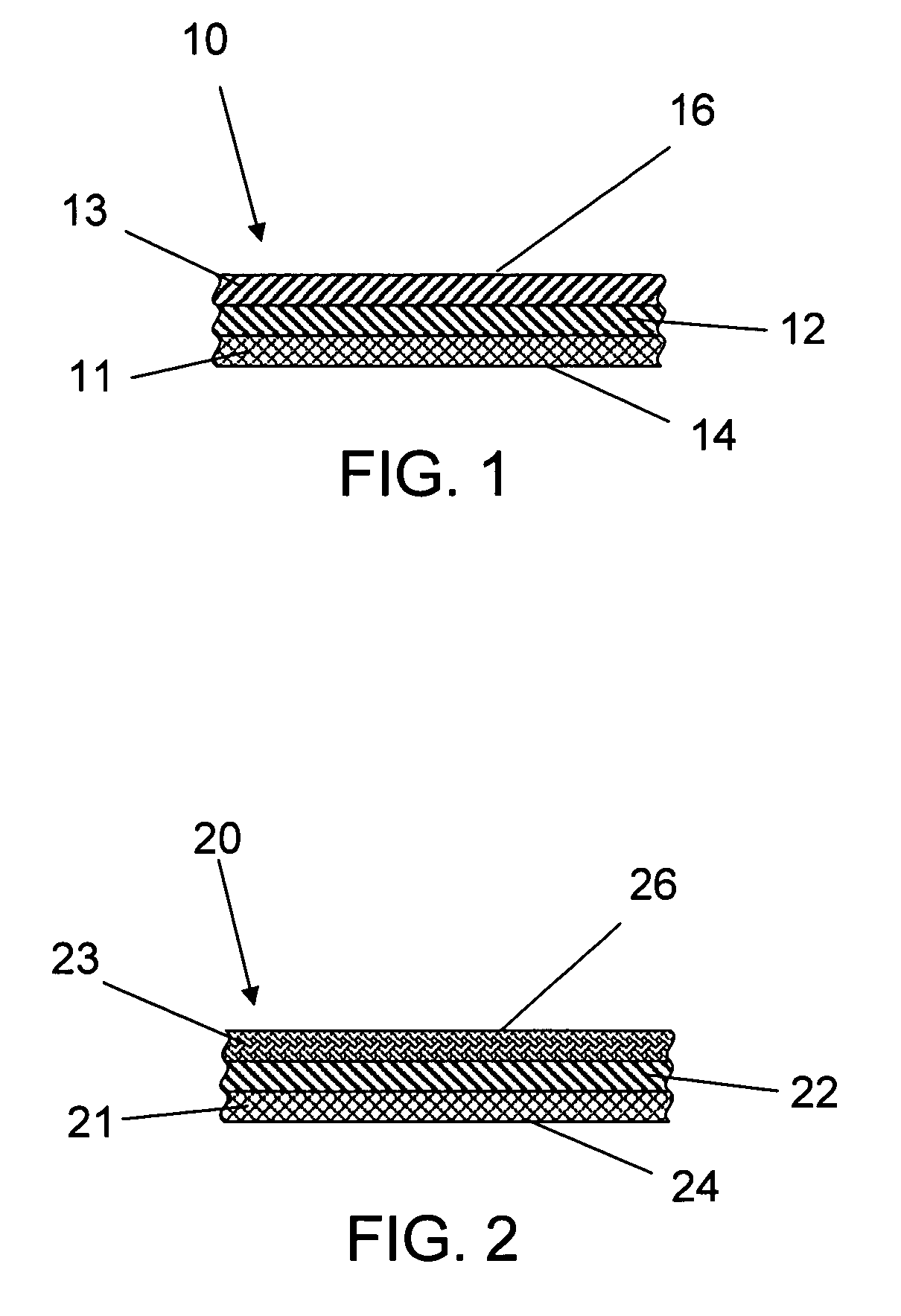Matched heat transfer materials and method of use thereof
a heat transfer material and heat transfer technology, applied in the direction of transportation and packaging, printing, chemistry apparatus and processes, etc., can solve the problems of poor washability and wear characteristics, easy exposure to light, and decrease in the brightness of the transfer
- Summary
- Abstract
- Description
- Claims
- Application Information
AI Technical Summary
Problems solved by technology
Method used
Image
Examples
example 1
[0099]A printable, peelable heat transfer paper was prepared having a base layer, a release layer overlaying the base layer, and a printable, peelable transfer film overlaying the release layer. The printable, peelable transfer film included an adhesive layer overlaying the release layer, a flow-resistant opaque layer overlaying the adhesive layer, and an image-compatible layer overlaying the flow-resistant opaque layer. The base layer was a cellulosic fiber paper having a basis weight of 86.3 g / m2. The release layer was a mixture of 3.3 parts acrylic latex (available as Rhoplex SP-100 from Rohm & Haas of Philadelphia, Pa.) and 2.0 parts kaolin clay (available as Ultrawhite 90 from Engelhard of Iselin, N.J.) coated on the paper as an aqueous dispersion and dried to a basis weight of 10.2 g / m2. The adhesive layer was ethylene methacrylic acid copolymer (available as Nucrel 599LG from DuPont of Wilmington, Del.) extrusion coated on the release layer at a basis weight of 42.5 g / m2. The...
example 2
[0102]An overlay heat transfer paper was prepared having a base layer, a release layer overlaying the base layer, and an overlay transfer film overlaying the release layer. The base layer was a cellulosic fiber paper having a basis weight of 86.3 g / m2. The release layer was a mixture of 4.4 parts acrylic latex and 2.6 parts kaolin clay coated on the paper as an aqueous dispersion and dried to a basis weight of 10.2 g / m2. The overlay transfer film was a mixture of 100 parts ethylene acrylic acid copolymer (available as Michem Prime 4983 from Michelman Chemical Co.), and 50 parts of 20,000 molecular weight polyethylene glycol (available as Carbowax 20M from The Dow Chemical Company) coated on the release layer as an aqueous dispersion and dried to a basis weight of 6.8 g / m2.
[0103]To test the susceptibility of the overlay heat transfer paper to transfer of the overlay transfer film to background areas where the printable, peelable transfer film had been weeded from the printable, peela...
example 3
[0104]The overlay heat transfer paper from Example 2 was prepared as described with the exception that the overlay transfer film was coated on the release layer at a basis weight of 3.4 g / m2. After the completed transfer process as described in Example 2, the resultant fabric had only speckles of the overlay transfer film that transferred from the overlay heat transfer paper. The speckles were easily removed in the first washing of the material.
PUM
| Property | Measurement | Unit |
|---|---|---|
| transfer temperature | aaaaa | aaaaa |
| softening point | aaaaa | aaaaa |
| softening point | aaaaa | aaaaa |
Abstract
Description
Claims
Application Information
 Login to view more
Login to view more - R&D Engineer
- R&D Manager
- IP Professional
- Industry Leading Data Capabilities
- Powerful AI technology
- Patent DNA Extraction
Browse by: Latest US Patents, China's latest patents, Technical Efficacy Thesaurus, Application Domain, Technology Topic.
© 2024 PatSnap. All rights reserved.Legal|Privacy policy|Modern Slavery Act Transparency Statement|Sitemap



